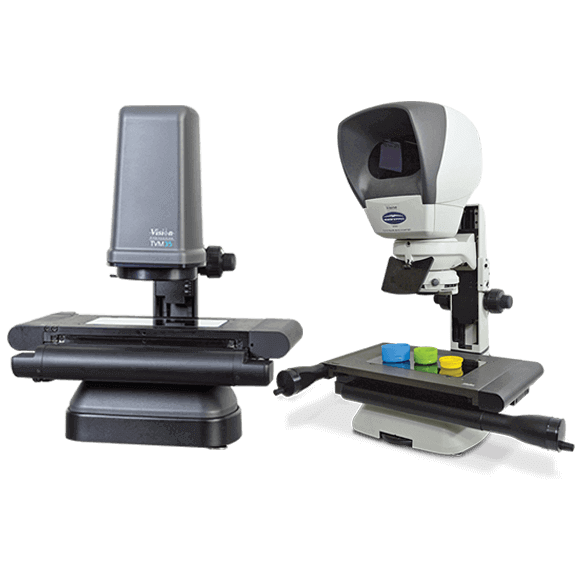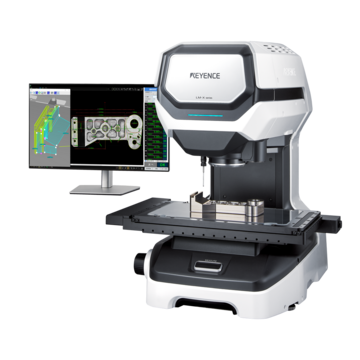The Duty of Optical Dimension Solutions beforehand Width Strategies
Optical measurement systems have actually transformed assessment, bringing a degree of precision that was as soon as inconceivable. As you discover even more, you'll uncover exactly how these systems are shaping the future of dimension and top quality control.
The Evolution of Width: A Historic Viewpoint
As you explore the background of metrology, you'll locate that its evolution mirrors humanity's mission for accuracy and standardization. From ancient people using body parts as devices of dimension to the advancement of standard weights and actions, each step shows our wish for precision. The Egyptians built the pyramids utilizing specific measurements, while the Romans advanced engineering with their advanced measuring devices.
Throughout the Renaissance, scientific developments changed the emphasis towards much more empirical techniques, leading the means for modern metrology. The introduction of the metric system in the late 18th century marked a substantial landmark, developing universal requirements. Throughout the 20th century, technical innovations further transformed metrology, allowing extremely precise measurements in different areas.
Today, assessment proceeds to progress, incorporating electronic modern technology and automation. This background highlights not just the importance of measurement but likewise our ruthless pursuit of improving accuracy and consistency in our progressively complicated world.
Principles of Optical Measurement Systems
Understanding the concepts behind optical dimension systems is crucial for exact outcomes in assessment. You'll wish to take into consideration fundamental optical principles, dimension precision variables, and reliable system calibration methods. Each of these aspects plays an essential role in guaranteeing your dimensions are trusted and specific.
Essential Optical Principles
While exploring optical dimension systems, you'll come across fundamental optical concepts that develop the backbone of exact data acquisition. Light acts in predictable ways, and recognizing these habits-- like representation, diffraction, and refraction-- is crucial for reliable measurements. You'll make use of lenses and mirrors to control light and concentrate it onto your target, making sure precision in your analyses. Additionally, the wave nature of light permits for interference patterns, which can enhance dimension resolution. Polarization can likewise play an essential role in distinct signal from noise, boosting the clarity of your outcomes. By understanding these principles, you'll be outfitted to leverage optical modern technologies successfully, paving the method for developments in width and ensuring your measurements are both dependable and repeatable.
Measurement Accuracy Elements
To accomplish high dimension precision in optical systems, a number of variables enter into play, affecting the integrity of your outcomes. The high quality of the optical elements matters considerably. High-grade lenses and detectors reduce aberrations and sound, guaranteeing your dimensions are specific. Second, ecological problems like temperature level and moisture can impact measurements, so preserving a stable environment is essential. Third, the alignment of the optical system is crucial; even small imbalances can cause substantial errors. The wavelength of light utilized impacts the resolution and precision of your dimensions. By dealing with these factors, you can boost the total performance of your optical dimension systems, bring about more trustworthy and accurate outcomes in your assessment applications.
System Calibration Methods
Accomplishing high dimension precision is just part of the equation; appropriate system calibration strategies are equally essential in optical measurement systems. To ensure your system supplies trustworthy outcomes, you ought to regularly calibrate it utilizing standard reference products. Begin by readjusting the optical components, like lenses and mirrors, to reduce methodical mistakes. Next off, use known measurements to confirm the system's outcome and make essential corrections. It's also essential to represent ecological aspects-- temperature level and humidity can affect measurements. Carry out a regular calibration routine to keep uniformity gradually. Ultimately, record all calibration treatments and outcomes; this will certainly assist you track efficiency and attend to any type of drift in precision. With these strategies, you'll boost the dependability of your optical dimension system.
Secret Technologies Behind Optical Measurement
Optical dimension systems rely upon a number of essential technologies that boost precision and effectiveness in metrology. One essential modern technology is interferometry, which utilizes the interference of light waves to gauge little displacements and surface area irregularities with extreme accuracy. You'll also locate laser scanning systems, which catch comprehensive 3D information of items quickly, making them invaluable for dimensional evaluation.
Additionally, CCD and CMOS sensors play a significant duty in converting light right into electrical signals, enabling high-resolution imaging and exact measurements. Advanced formulas for image handling further enhance measurement accuracy by analyzing information in real time, removing noise and improving attributes.
Lastly, optical fiber give adaptability and the capacity to measure in hard atmospheres while keeping signal integrity. By leveraging these innovations, you can achieve exceptional lead to your width tasks, making certain that your measurements are both accurate and trustworthy.
Applications of Optical Dimension in Industry
As markets significantly require precision and effectiveness, the applications of optical dimension systems have actually become important throughout numerous fields. In more helpful hints manufacturing, these systems assist you keep an eye on measurements and resistances in real-time, ensuring quality control without lengthy hands-on checks. In the automotive industry, optical measurements assist in lining up elements with accuracy, improving safety and security and efficiency.
In electronic devices, you're making use of optical methods to inspect minute features on circuit boards, discovering flaws that might cause failings. The aerospace market gain from non-destructive screening methods, enabling you to examine materials and elements without jeopardizing their stability.
Optical measurement also plays an important role in fabrics, ensuring textile measurements satisfy specific requirements. optical measurement system. With their ability to provide high-resolution information promptly, these systems encourage you to make informed choices, simplify procedures, and eventually drive advancement across your industry
Enhancing Precision and Effectiveness in Measurements
When you consider boosting accuracy in measurements, accuracy in your measurement techniques is essential. By streamlining these procedures, you can accomplish quicker results without giving up high quality. Let's discover exactly how adopting innovative optical measurement systems can elevate both precision and efficiency in your job.
Precision in Measurement Methods
Accuracy in dimension strategies is essential for achieving reputable results in assessment, particularly considering that tiny disparities can lead to substantial mistakes. By making use of innovative optical dimension systems, you can boost the precision of your dimensions. In enhancement, exact measurements enable you to preserve quality control, guaranteeing that products meet stringent requirements.
Simplifying Dimension Processes
To boost precision and effectiveness in measurements, streamlining your dimension procedures is necessary. Begin by embracing optical measurement systems that offer real-time information, lowering the moment spent on manual recording. These systems frequently integrate flawlessly with existing software program, enabling you to automate data collection and evaluation.
Next, standardize your dimension procedures. By executing regular treatments, you reduce variability and improve repeatability. Do not fail to remember to frequently calibrate your tools to ensure its precision.

The Effect of Optical Dimension on R & D
As researchers venture to push the limits of technology, optical measurement systems have come to be crucial tools in the growth procedure. These systems provide you with accurate, real-time information that improves your capacity to assess complex products and structures. In different areas, from biotechnology to aerospace, you count on optical dimensions to maximize layouts and boost item efficiency.

With high-resolution imaging and non-contact approaches, you can decrease example disruption, enabling even more exact outcomes. This capability to catch minute details accelerates your R&D cycle, letting you repeat layouts promptly and successfully. Optical dimension cultivates partnership across disciplines, as the information created is commonly quickly interpretable and shareable.
Eventually, integrating optical dimension systems right into your research not just enhances efficiency but additionally grows your understanding of the phenomena you study. By leveraging these innovative methods, you're better equipped to introduce and stay in advance in an affordable landscape.
Future Trends in Optical Dimension Solutions
With the quick development of innovation, you're likely to see substantial changes in optical measurement systems that will certainly redefine their application across numerous industries. You'll see an approach enhanced automation and combination of expert system, enabling real-time data evaluation and enhanced precision. Miniaturization is another pattern; portable gadgets will certainly enable dimensions in tighter spaces, making them excellent for fields like aerospace and biomedical applications.
Expect to see systems that can operate in difficult settings, providing reputable dimensions in severe problems. As these modern technologies converge, you'll find that optical measurement systems not visit only improve precision however likewise simplify process, ultimately driving development and efficiency in your projects.
Regularly Asked Questions
How Do Optical Measurement Systems Contrast to Typical Dimension Techniques?
Optical dimension systems use higher accuracy and faster outcomes compared to traditional techniques. You'll find they capture more information factors properly, lowering human mistake and raising integrity, making them a recommended selection in different applications.
What Industries Benefit Many From Optical Measurement Systems?
You'll find sectors such as aerospace, vehicle, and electronics benefit most from optical dimension systems. These fields count on exact measurements to guarantee quality and efficiency, improving effectiveness and decreasing costs via sophisticated technology.

Are Optical Measurement Solutions Expensive to Execute?
Optical dimension systems can be expensive to carry out, but their precision and efficiency commonly dig this justify the price. Purchasing such modern technology can lead to considerable long-lasting savings and renovations in quality across numerous applications.
What Skills Are Needed to Run Optical Measurement Solutions?
To run optical dimension systems, you'll need strong analytical abilities, attention to detail, and effectiveness in software tools. Experience with optics and an understanding of dimension concepts will likewise improve your performance and efficiency.
Exactly How Do Ecological Variables Affect Optical Measurements?
Environmental aspects like air, humidity, and temperature high quality can misshape optical dimensions. You'll observe variants in precision as a result of light disturbance or refraction. optical measurement systems. Preserving steady conditions is necessary for precise and dependable optical measurement results
Conclusion
In summary, optical dimension systems are changing assessment by offering unmatched accuracy and effectiveness. As you explore future fads, you'll see exactly how the integration of AI and automation will certainly continue to elevate dimension practices, driving technology and enhancing quality control.
Attaining high measurement precision is only component of the equation; correct system calibration methods are equally crucial in optical measurement systems.When you believe about boosting accuracy in dimensions, accuracy in your measurement strategies is vital. By utilizing sophisticated optical measurement systems, you can improve the precision of your measurements.To boost accuracy and effectiveness in measurements, enhancing your dimension processes is crucial. How Do Optical Dimension Systems Compare to Typical Measurement Techniques?